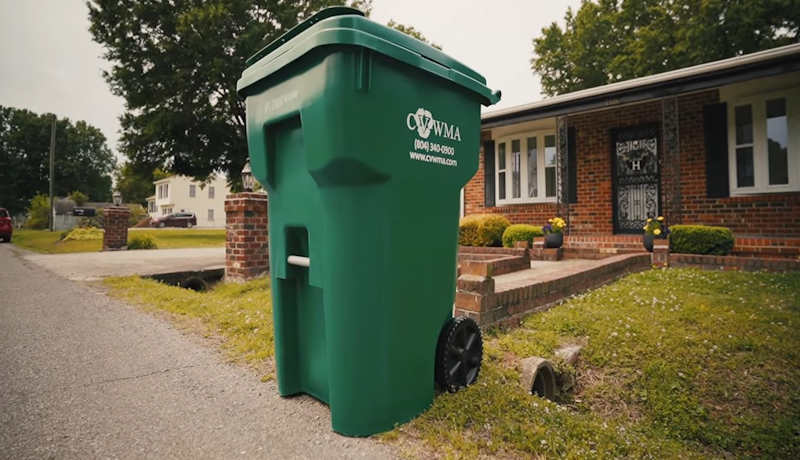
Tennessee Dumpster Rental Permit Requirements
Dumpster rentals in Tennessee are one of the most common solutions for waste disposal during construction projects, home renovations, or significant cleanups. Renting a dumpster in Tennessee requires you to have the necessary skills so that you do not get any legal issues. Depending on where the dumpster is placed and local regulations regarding waste management, permits are often required. Below, we’ll discuss the major permit requirements, processes, and considerations for renting a dumpster in Tennessee.
Do You Need a Permit for a Dumpster Rental in Tennessee
A dumpster permit is not required for every dumpster rental in Tennessee. Typically, you will be required to pay for a permit depending on the location of the dumpster:
- Private Property: If you intend to place the dumpster on private property like a driveway or backyard, permits are hardly needed. But be sure to check with local homeowner associations (HOAs), if applicable, as they may have particular regulations regarding dumpster placement
- Public Property: If the dumpster is going on public property, like a street, sidewalk, or alley, you will almost always need a permit. Public placement should not block vehicular or pedestrian traffic; local governments like Memphis regulate this to guarantee both safety and accessibility
Permits for Dumpster Rentals – What Types are There
The most common dumpster-related permits required in Tennessee are right-of-way permits and zoning permits:
- Right-of-Way Permits: Required when a dumpster blocks public spaces, such as streets and sidewalks. Local government offices or public works departments issue these permits to guarantee that the placement does not create safety hazards or interfere with the public’s access
- Zoning Permits: Depending on where you live, zoning laws might affect where you can put a dumpster. Some residential and commercial areas may have restrictions on dumpster use or require additional clearance, for example
The Dumpster Rental Permit: What You Need to Know
The requirements for obtaining a dumpster rental permit in Tennessee differ by city or county. For recycling, sometimes sorting waste is required. Here’s a broad overview of the general steps:
- Contact Local government office: Find the relevant department that issues permits That is usually the local public works department or the building and zoning office
- Fill Out The Required Application: Provide the necessary information in the required permit application form. You might need to specify the dumpster dimensions, placement location, and period of rental
- Pay It: Most permits have a fee, which also varies with the jurisdiction. Fees normally fall between $25 and $100
- Planning Ahead: Applications for permits can take a few days to be processed, so do this weeks or, if possible, a month in advance of your intended rental
- Show the Permit: After approval, some jurisdictions require that the permit be visibly displayed on or near the dumpster
Tennessee-Specific Rules and Factors
Permit requirements vary from one town to the next, but there are some noteworthy state-level regulations and trends:
- Stringent Rule In Cities: Major cities, including Nashville, Memphis and Knoxville have more stringent regulations concerning dumpsters in the public right-of-way. Those cities might need other permits or inspections. Notably, Tennessee law focuses on proper waste disposal, especially for construction or hazardous waste. If someone is renting a dumpster, there are other considerations that may be important if their waste involves materials like asbestos, chemicals, or electronics
- HOA Restrictions: Homeowners associations in suburban and residential areas may have their own rules dictating whether a dumpster can be visible at your home, how long it can stay and noise rules. Prevent fines or friction: Check with your HOA
Penalties for Non-Compliance
You could face fines, penalties, or legal consequences for not getting the necessary permits for your dumpster rental. Penalties may include:
- Penalty for Blocking Public Property: If you do not have a permit, you could be fined anywhere between $50 to $500, depending on the municipality
- Mandatory Removal: Dumpsters illegally placed on public or private property may be removed or towed — at your expense
- Delays in Projects: If non-compliance is detected, construction or cleanup projects can be delayed, which will raise the overall cost
Navigating the Dumpster Rental Process
If you want to avoid complications when renting a dumpster in Tennessee follow these tips:
- Things to Know Ahead of Renting a Dumpster: Local policies and permits
- Professional Help: Most respectable dumpster rental services help with the permitting process or give directions
- Monitor Time Limits: The majority of permits are valid for a given time frame. However, you should follow the approved timeline or you might incur some kind of fee
- Clear Communication: If you will be placing the dumpster in a location that may affect the access or convenience of neighbors or their family members, be sure to let them know in advance
A dumpster rental in Tennessee can help facilitate the management of project-related waste, but what if there are some restrictions in place?
If the dumpster is situated on public property, you will usually need a permit to place it there. This means you will need to go through local government offices to obtain that permit. Complying with state and municipal guidelines can be complicated, but knowing the permitting process protects you from violations and delays for the hassle-free rental experience you want. Always plan ahead, consult with local authorities, and use the services of experienced rental companies to help navigate the legal and logistical aspects of your project.



 What can California do to better prepare for forest fires?
What can California do to better prepare for forest fires? Air pollution is the world’s single biggest health risk, so it should be no surprise that cities want to know where and why air quality is at its worst. The problem? Air monitoring devices in the nation are not widely used and may not be as accurate as expected.
Air pollution is the world’s single biggest health risk, so it should be no surprise that cities want to know where and why air quality is at its worst. The problem? Air monitoring devices in the nation are not widely used and may not be as accurate as expected. Approximately 8 out of 10 patients suffering from type 2 diabetes are either overweight or obese. Among these people, their bodies need two to three times as much insulin compared to a person with an average and healthy weight.
Approximately 8 out of 10 patients suffering from type 2 diabetes are either overweight or obese. Among these people, their bodies need two to three times as much insulin compared to a person with an average and healthy weight.  When your work involves meeting people, it is important that you face them with a sparkling white smile. After all, first impressions truly make an impact on how people see you.
When your work involves meeting people, it is important that you face them with a sparkling white smile. After all, first impressions truly make an impact on how people see you. 